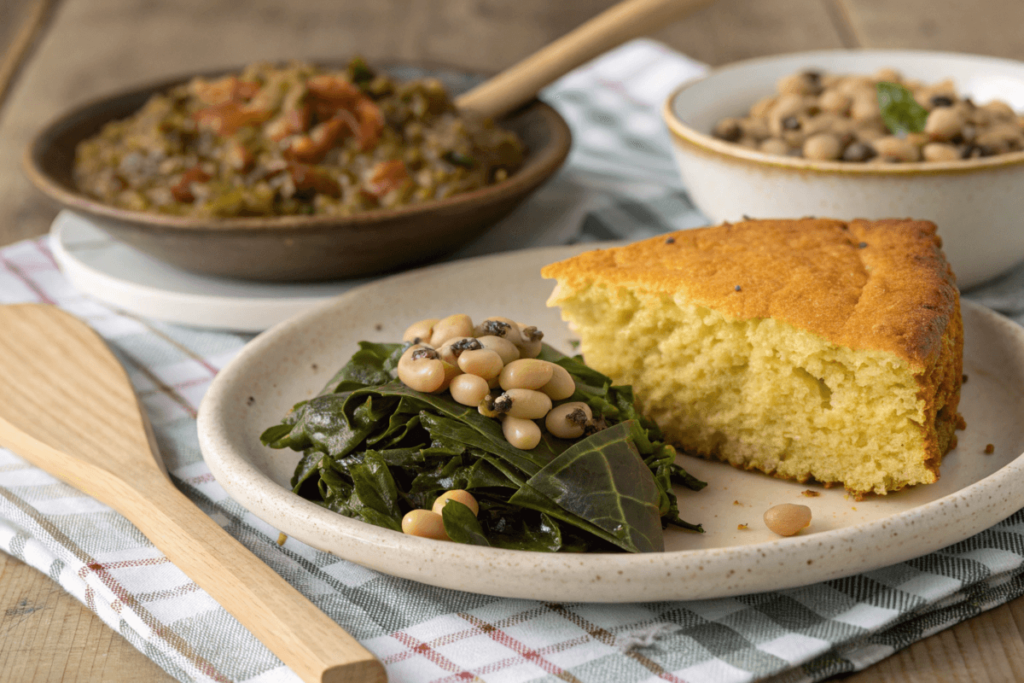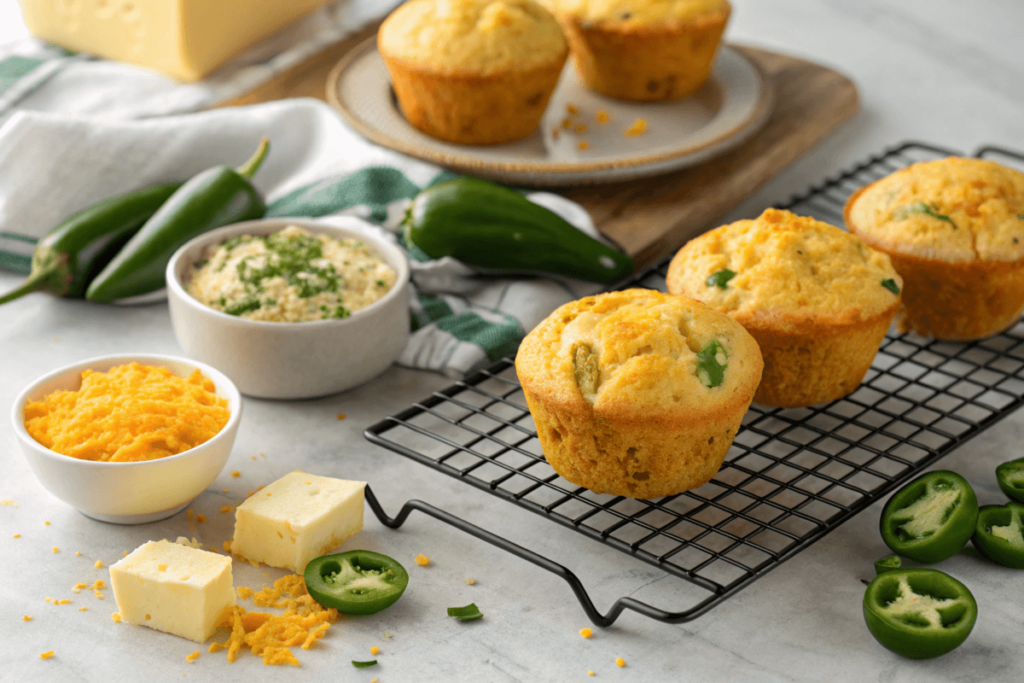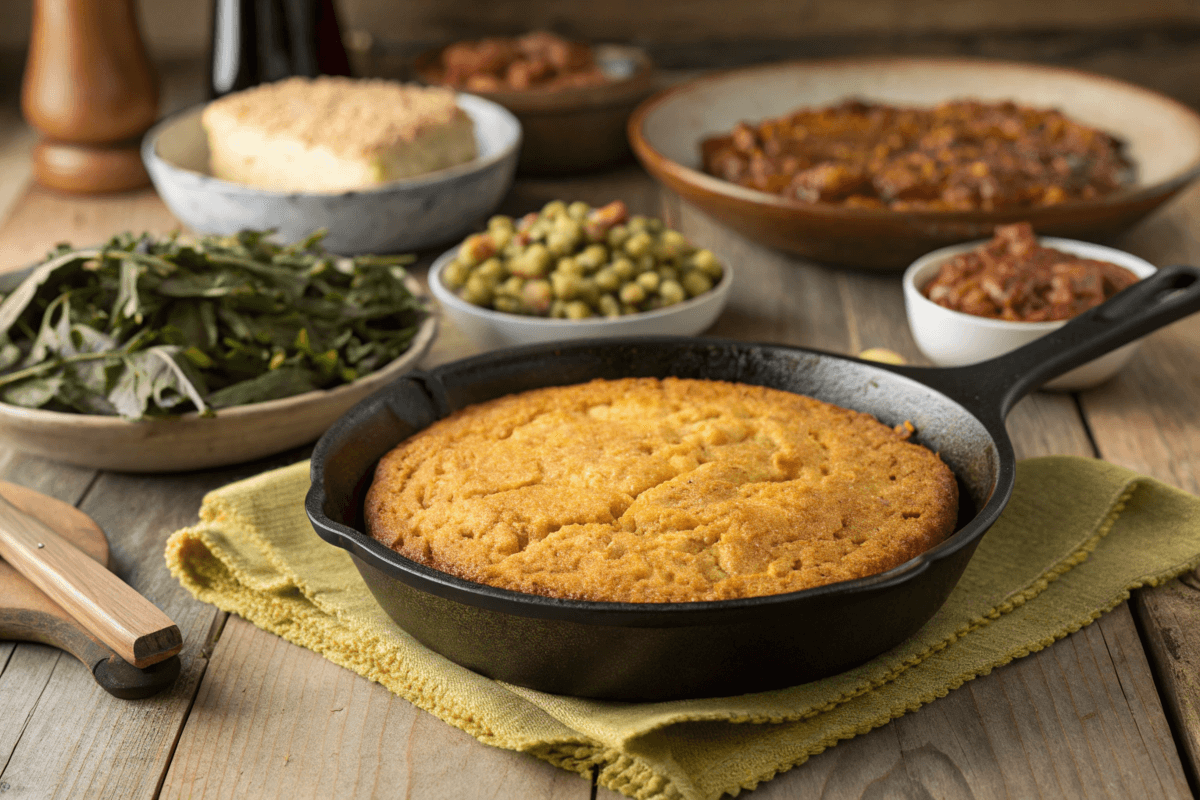Cornbread has long been a staple in Southern cuisine, embodying history, culture, and a sense of identity that’s as rich as its flavor. Yet, one question stirs spirited debate: Why do Southerners not put sugar in cornbread? To some, it’s about preserving authenticity, while others argue it’s just a matter of taste. This article explores the historical roots, cultural significance, and culinary science behind this savory tradition. Whether you’re a die-hard Southern cook or simply curious, we’ll uncover why sugarless cornbread remains a cherished symbol of Southern pride.
The Historical Roots of Cornbread in Southern Culture
Origins of Cornbread in Southern Cuisine
Cornbread’s story begins long before the South was known for its hospitality and charm. Indigenous peoples in the Americas were the first to craft bread from cornmeal, laying the groundwork for what would become a Southern classic. Their recipes, often made from simple, local ingredients like ground corn and water, didn’t include sugar. Sweeteners were scarce, and the focus was on creating sustenance, not dessert.
When European settlers adopted these techniques, cornbread evolved. Over time, it became a cornerstone of Southern diets, particularly among farmers and rural communities who relied on corn as a dependable crop. The early versions were dense, slightly crumbly, and entirely savory—traits that still define traditional Southern cornbread.
Influence of Economic and Agricultural Factors
The South’s agricultural economy played a pivotal role in shaping cornbread recipes. Corn was abundant, affordable, and easy to grow, making it a dietary mainstay. In contrast, sugar was considered a luxury item for much of the 18th and 19th centuries. For many Southern households, adding sugar to cornbread would’ve been both impractical and unnecessary.
Savory cornbread wasn’t just economical; it was practical. It paired seamlessly with hearty, flavorful dishes like greens, beans, and stews, complementing rather than competing with their bold flavors. Over time, this practical, savory approach became deeply embedded in Southern food traditions.
Cultural Significance of Sugarless Cornbread
The absence of sugar in cornbread isn’t just a culinary choice—it’s a cultural statement. Many Southerners view sweet cornbread as an intrusion, an unwelcome Northern influence on their time-honored recipes. To them, sugar in cornbread feels out of place, akin to putting ketchup on a biscuit.
This preference isn’t about stubbornness but preserving an authentic way of life. For generations, sugarless cornbread has been served at family gatherings, church potlucks, and Sunday dinners, reinforcing its place in Southern culture. To Southerners, it’s not just bread—it’s tradition on a plate.
Cultural Perspectives on Cornbread Preferences
Southern Identity and Food Traditions
In the South, food isn’t just sustenance; it’s a reflection of identity and heritage. Cornbread, in particular, holds a special place in Southern hearts and kitchens. The preference for savory, sugarless cornbread is deeply rooted in tradition. Many Southerners believe that adding sugar deviates from the authentic recipes passed down through generations. This culinary choice symbolizes a commitment to preserving the flavors and methods of their ancestors.

Why Sweet Cornbread is Viewed as Northern
The divide between sweet and savory cornbread often mirrors the cultural distinctions between the North and the South. In Northern regions, cornbread tends to be sweeter, resembling cake more than bread. This difference isn’t merely about taste but also reflects regional agricultural practices and ingredient availability. The South’s emphasis on savory cornbread without sugar underscores a desire to maintain culinary traditions that distinguish it from other parts of the country.
The Culinary Science Behind Traditional Southern Cornbread
Ingredient Choices and Their Impact
Traditional Southern cornbread relies on simple ingredients: cornmeal, buttermilk, eggs, and leavening agents. The absence of sugar allows the natural sweetness of the cornmeal to shine through. Buttermilk adds a tangy flavor and reacts with baking soda to provide leavening, resulting in a tender crumb. Adding sugar can alter the texture, making the cornbread more cake-like, which deviates from the dense, crumbly texture that characterizes Southern cornbread.
Why Southerners Prefer a Savory Profile
The preference for savory cornbread complements the rich and often spicy flavors of Southern cuisine. Dishes like collard greens, black-eyed peas, and barbecue benefit from the neutral, slightly salty profile of traditional cornbread, which serves as a perfect accompaniment without overwhelming the palate. This balance enhances the overall dining experience, allowing each component of the meal to stand out.
By understanding the cultural significance and culinary reasoning behind sugarless cornbread, one gains deeper insight into the Southern way of life and the importance of preserving its rich food traditions.
Controversies and Modern Adaptations
Debates Around Sugar in Cornbread
The question, Why do Southerners not put sugar in cornbread?, often sparks lively debates among culinary enthusiasts. Traditionalists argue that authentic Southern cornbread should be savory, reflecting historical recipes that excluded sugar due to scarcity and practicality. Conversely, some modern cooks prefer a touch of sweetness, influenced by regional variations and personal taste. This ongoing discussion highlights the dynamic nature of food traditions and regional pride.
Blending Tradition with Innovation
In today’s culinary landscape, chefs and home cooks alike experiment with cornbread recipes, blending tradition with innovation. While some adhere strictly to the classic, sugarless Southern cornbread, others incorporate ingredients like jalapeños, cheese, or even a hint of honey to create unique twists. These adaptations showcase the versatility of cornbread and its ability to evolve while still honoring its roots.
FAQs and Popular Questions Answered
Why Do Southerners Not Put Sugar in Cornbread?
The tradition of omitting sugar from cornbread in the South stems from a combination of historical, economic, and cultural factors. Historically, sugar was scarce and expensive, especially in rural Southern areas, which meant cooks had to rely on what was locally available. As a result, savory cornbread recipes became the norm, emphasizing simplicity and practicality.
Culturally, this practice evolved into a hallmark of Southern identity, symbolizing the region’s resourcefulness and distinct culinary traditions. Over time, savory cornbread became more than just a recipe—it became a way to distinguish Southern cooking from sweeter Northern versions. Thus, the absence of sugar in Southern cornbread represents a deep connection to heritage, reinforcing the region’s unique food culture.
Is Adding Sugar to Cornbread Really a Northern Tradition?
Yes, adding sugar to cornbread is far more common in Northern regions of the United States. This sweeter style of cornbread often resembles cake more than bread, reflecting the North’s culinary influences and access to sugar during the early development of regional recipes. Northern cooks typically incorporated sugar, flour, and butter, creating a lighter, sweeter dish that contrasts sharply with the South’s savory, crumbly cornbread.
These regional differences are rooted in diverse agricultural practices and ingredient availability. In the South, cornmeal was often the main ingredient, with buttermilk and bacon grease enhancing its savory profile. Meanwhile, in the North, the addition of sugar highlighted the abundance of sweeteners available at the time. While preferences differ, these variations reflect the rich culinary histories that define each region’s approach to cornbread.
What Are the Key Ingredients for Authentic Southern Cornbread?
Authentic Southern cornbread typically includes:
- Cornmeal
- Buttermilk
- Eggs
- Baking powder or baking soda
- Salt
- Fat (such as bacon grease or butter)
Notably, traditional recipes exclude sugar, emphasizing a savory flavor profile.
How Has Cornbread Evolved Over the Years?
Cornbread has evolved from a simple, staple food to a versatile dish enjoyed in various forms across the United States. While traditional Southern cornbread remains savory, modern adaptations include sweeteners, additional ingredients like cheese or peppers, and alternative cooking methods. This evolution reflects changing tastes and the blending of culinary traditions.
Pairings and Serving Suggestions for Southern Cornbread
Classic Southern Dishes to Serve with Cornbread
Southern cornbread is a match made in heaven for hearty, flavorful dishes that are staples of Southern cooking. Why do Southerners not put sugar in cornbread? The answer lies in its versatility as a savory side dish, perfectly balancing the bold flavors of popular meals. It pairs wonderfully with:
- Collard greens: The slightly bitter taste of greens is complemented by the neutral, savory cornbread.
- Chili or stews: Cornbread soaks up the rich, spiced broths, adding texture to each bite.
- Barbecue: The smoky and tangy notes of barbecue dishes find a perfect partner in cornbread’s crumbly simplicity.
These pairings highlight cornbread’s role as a culinary companion, designed to enhance rather than overpower.
Creative Ways to Enjoy Cornbread
While traditional recipes reign supreme, modern cooks have found creative ways to incorporate cornbread into diverse meals. Some fun and inventive ideas include:
- Cornbread stuffing: A flavorful alternative to classic bread stuffing for holiday dinners.
- Cornbread croutons: Toasted cubes of cornbread make salads extra special.
- Cornbread bowls: Hollow out a round of cornbread to create an edible bowl for chili or soup.
These variations show that even a dish steeped in tradition can adapt to contemporary tastes while staying true to its roots.
The Future of Cornbread in Southern Cuisine
Preserving Tradition in Modern Times
As food trends evolve, Why do Southerners not put sugar in cornbread? remains a touchstone question for culinary purists. Many cooks in the South are committed to preserving the legacy of savory cornbread, passing down recipes that have stood the test of time. Efforts to teach younger generations about the historical significance of cornbread are vital in keeping this tradition alive.
Embracing Change While Honoring the Past
That said, change is inevitable in the culinary world. As food culture evolves, even the most traditional recipes, like Southern cornbread, find themselves subject to reinterpretation. Younger chefs and home cooks experiment with new ingredients and innovative techniques, creating cornbread recipes that blend traditional elements with modern flair. These adaptations often incorporate global influences, such as adding spices, cheese, or roasted vegetables, while staying true to the dish’s original intent.
For instance, some cooks have embraced healthier versions of cornbread by substituting cornmeal with whole-grain or gluten-free options, catering to dietary needs without losing the dish’s essence. Others have infused bold flavors, like jalapeños, herbs, or even sun-dried tomatoes, to give this timeless bread a contemporary twist. These variations demonstrate that cornbread is not only a versatile canvas for creativity but also a dish capable of bridging old and new.
Despite these innovations, respect for the core principles of Southern cornbread—its simplicity, savoriness, and practicality—remains paramount. Traditionalists and modernists alike strive to preserve its iconic characteristics, ensuring it continues to resonate with its cultural roots. By finding a balance between honoring the past and embracing change, Southern cornbread has the unique ability to thrive in kitchens worldwide, inspiring cooks from all walks of life to make it their own while celebrating its rich history.
In this way, cornbread stands as a testament to the enduring nature of Southern cuisine. It reminds us that food can evolve without losing its soul, maintaining its connection to heritage while opening doors to new possibilities. Through this blend of tradition and innovation, cornbread’s future looks as bright as its golden crust.

Regional Variations in Cornbread Recipes
Northern vs. Southern Cornbread
One of the most striking differences in American cornbread recipes is the contrast between Northern and Southern styles. While Why do Southerners not put sugar in cornbread? remains a defining question for many, Northern cornbread often leans towards sweetness. Northern recipes typically include a significant amount of sugar or other sweeteners, resulting in a softer, cake-like texture. In contrast, Southern cornbread is savory, with a coarser crumb and a crisp, golden crust.
This regional divide reflects more than just taste preferences—it embodies distinct cultural influences and historical factors. Northerners embraced sweeter cornbread as their cooking styles adapted to available ingredients, while Southerners clung to their savory tradition.
The Impact of Ingredients on Regional Flavor
The ingredients used in cornbread recipes further highlight these regional differences. For example:
- Northern cornbread: Often includes flour in addition to cornmeal, resulting in a lighter texture. Butter and sugar are common additions.
- Southern cornbread: Relies solely on cornmeal, giving it a denser, heartier texture. Buttermilk and bacon grease are traditional components that enhance its savory profile.
Understanding these nuances helps to appreciate why this humble dish varies so greatly across regions.
The Role of Cornbread in Modern Food Trends
Cornbread in Fusion Cuisine
As culinary boundaries blur, cornbread has found its way into fusion cuisine, creating unique and exciting dishes. Modern chefs are reimagining cornbread by incorporating international flavors, such as jalapeños for a spicy kick or incorporating it into tamale-inspired casseroles. While traditional Southern cooks might shy away from these innovations, they showcase how versatile cornbread can be.
Interestingly, the debate over Why do Southerners not put sugar in cornbread? has influenced these trends. Even in fusion cuisine, many chefs respect the Southern preference for savory cornbread as a base for their creations.
Cornbread in Health-Conscious Cooking
With the rise of health-conscious eating, cornbread has also adapted to meet modern dietary preferences. Gluten-free cornmeal options, vegan recipes, and low-fat versions are gaining popularity among those who want a healthier take on this classic dish. These adaptations prove that even the most traditional recipes can evolve to suit contemporary lifestyles.

